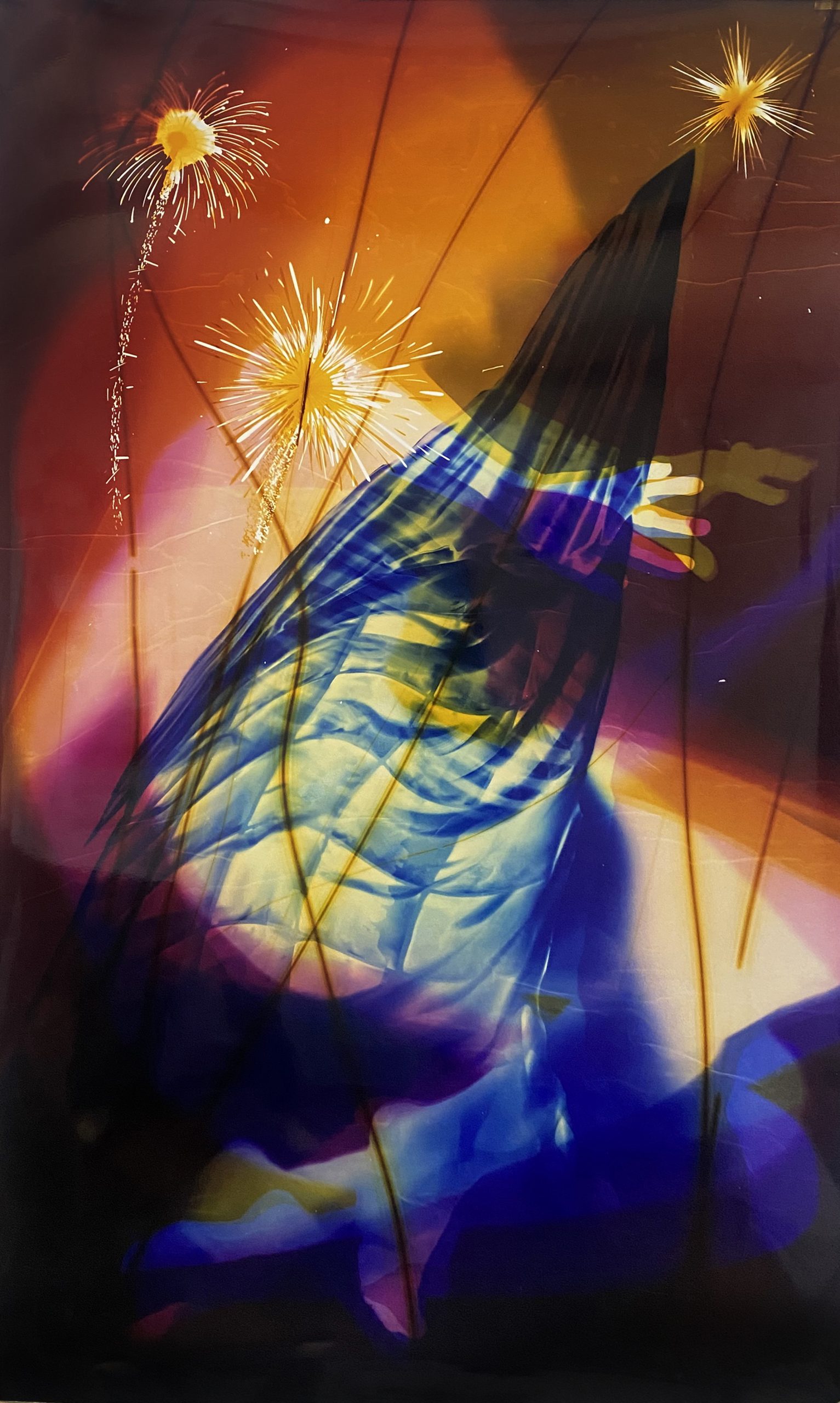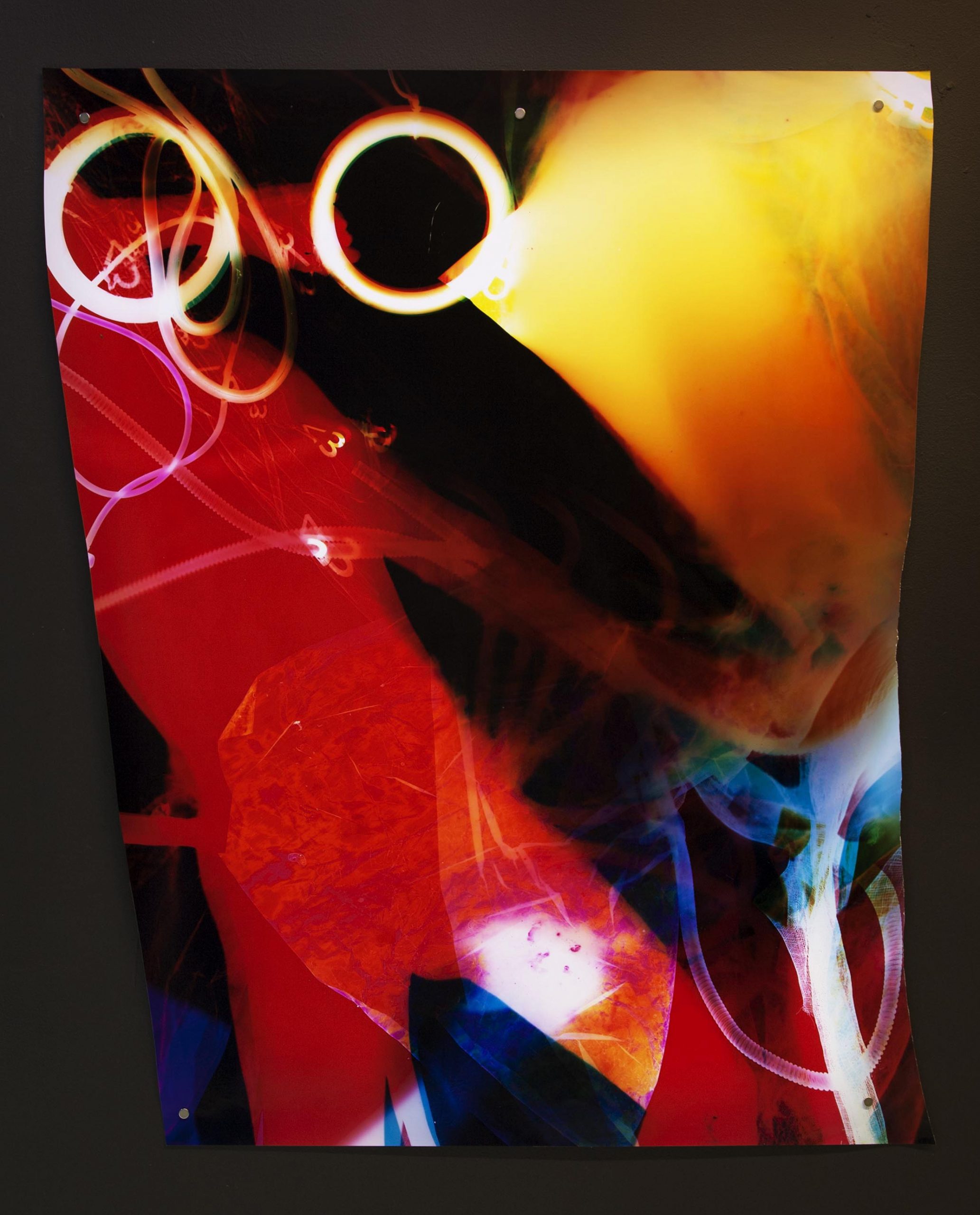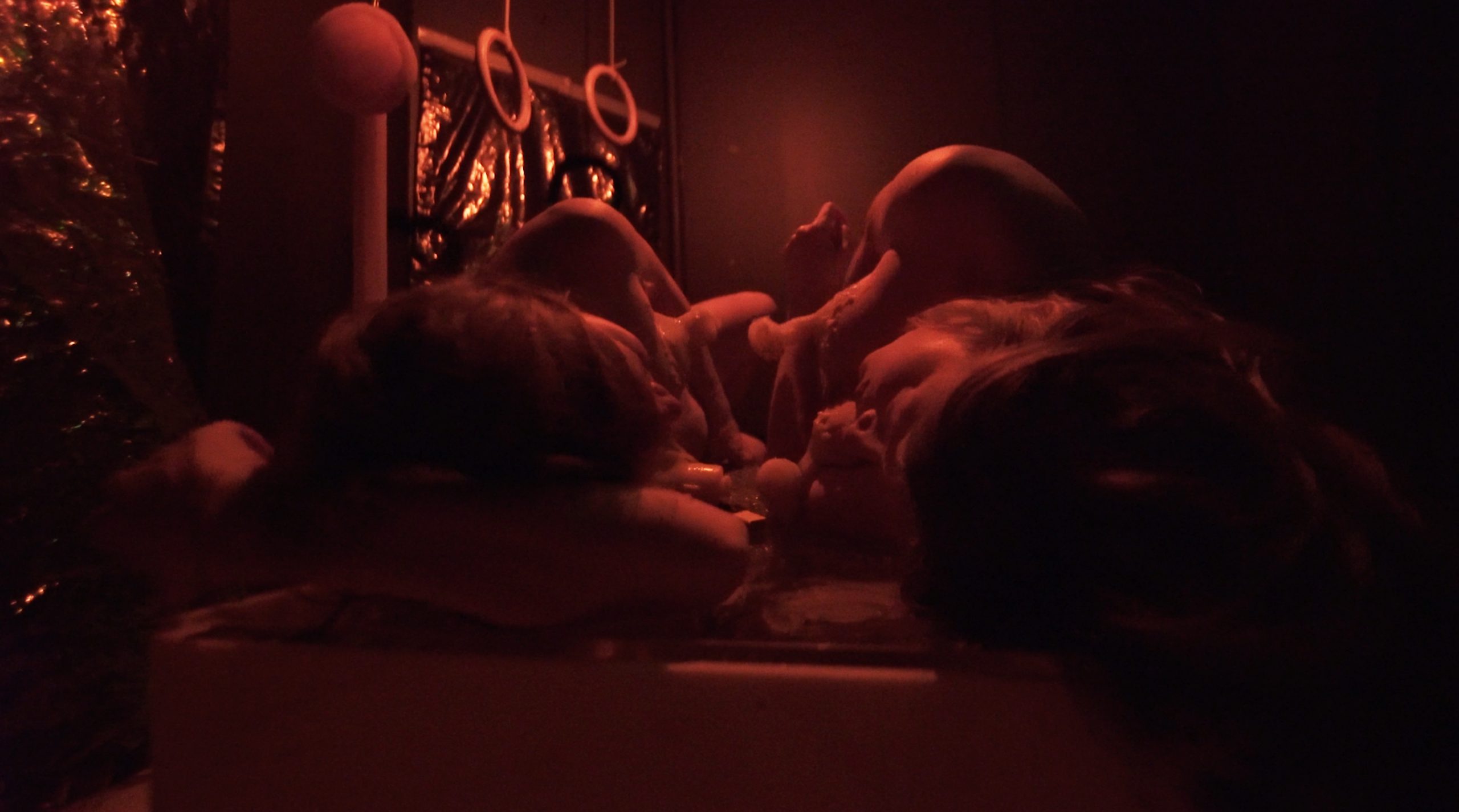Tatiana Kronberg Talks Process, Performance, and Perseverance
Hillary Madariaga speaks to photographer Tatiana Kronberg about process, performance, and perseverance in her unique photographic works.
Tatiana Kronberg: I was born in Sevastopol, Ukraine, and was immediately flown to Vladivostok in the Russian Far East due to my parents’ scientific research assignment. After two years there, my family settled in St. Petersburg. This was the very tail end of the Soviet era. We first lived in a communal apartment with two other families but then moved to our own two-bedroom apartment in a co-op building, where the future residents all contributed to its construction. My father left his lab to work on this project for six months. In 1991, my parents were able to get US visas, and we left for America. We took a cross-country Greyhound bus from New York to California and ended up staying with a family friend on an abandoned hippie commune. The commune was not far from a Native American reservation, where I spent nights sitting around a campfire listening to my classmates talk about their lives. There was a complete dissonance between my experiences in California and how I initially imagined America. We eventually moved to New York City, where my mother was invited to do neuroscience research at NYU. I went there on a tuition remission program and took art classes at the school of education.

As a younger artist myself, I am interested in how your upbringing and home life influenced your artistic practice. Were your parents supportive of your creative development?
My parents are scientists–my mother in the field of cellular and molecular neuroscience, and my father, initially, a physicist, has been engaged for decades in clinical neuroscience research utilizing an MEG scanner. So there was always a lot of talk about physics and math when I was growing up. And chess playing! I hated it and escaped into the world of my imagination, secretly staging wedding ceremonies out of chess pieces. Eventually, my parents realized that I was not going to be a scientist and gave me a camera. I distinctly remember taking a series of photos of my parents’ long shadows as they walked ahead of me arguing about one of many scientific topics. When we moved to New York and my mother worked for NYU, I sometimes helped her at the lab after school, lending a hand in brain-slice preparation for analyzing the synaptic function. I believe that this scientific knowledge and research, especially in the area of the biochemistry of the brain, has lodged itself in my subconscious, despite me trying to resist it. My work has a lot to do with trying to unlearn everything I know about the laws of science, and letting the subconscious guide me.
You work mostly with photograms—a process that involves making a photographic exposure onto light-sensitive paper, without the use of a camera. Can you talk more specifically about the mechanics of this process?
The mechanics of the photo paper being exposed to light are pretty much the same as the cellulose film’s exposure inside a manual camera. Each silver halide layer of the photo paper contains dye couplers that alternatively react to the blue, green, and red light. The opposite colors of yellow, magenta, and cyan form in each of the corresponding layers after the paper is put through a process of oxidation by the developer in the color processor machine. The remaining silver particles are bleached and washed out. I have met a few color printers, whose darkrooms resemble alchemist’s workshops and who recover and save all their silver as their retirement fund! I have always been super impatient when it comes to spending hours in the color darkroom trying to color balance a latent image produced from an orange-tinted cellulose film strip. My process folds together the negative and the print stages of the photographic process. In order to modify the light falling onto the paper, I utilize color-tinted layers printed onto transparent material, meshes, objects of varying densities and translucencies (that I usually cast out of clear silicone), and masks (my body being the biggest mask).
I am particularly interested in the performative aspects of this process and the fact that the works themselves feel both painterly and sculptural. Do you identify primarily as a photographer? What is it about this particular medium that you feel most drawn to?
Performance is central to my work. For me, the darkroom serves as both the camera and the stage. I took acting classes as a child and as an adult. I am extremely shy and performing always felt like an out-of-body experience. Besides acting, photography has always been present in my life. I was initially attracted to documentary photography as the camera gave me access to otherwise closed-off worlds. I spent several years documenting the ballroom scene in New York. Eventually, I put away my camera and started going to the weekly mini balls simply as a spectator, and even as a very timid dancer. These experiments have shaped my darkroom practice and imbued my photograms with a performative quality. The Femme Queen battles, full of dips, spins, and dead drops, were the initial inspirations for my photograms. I have been trying to capture the moment when, at the end of the battle, both competitors do a dead drop to the floor in unison, their bodies frozen for a split second by the lights that flick on as the DJ MikeQ abruptly stops the beat. I initially collaborated with a ballroom legend, Karina Precious Revlon, who was able to perform the most incredible moves in the dark, on top of the photo paper. Eventually, I moved on to using my own body, as the feeling of complete disorientation during the extended periods of fumbling around alone in complete darkness adds a deeply personal and subconscious dimension to the works. In the dark, I face all my fears, insecurities, and desires. All of my photograms start in the sculpture studio, where I create various props to be used during the exposures and then cast them in translucent latex. In a way, my photograms are paintings made with light that document these performative sculptures.
Making art shows is an expression of an artist’s life and emotions, not only in representational painting, impressionism, and abstract mediums, but photography as well. Is there a unique way in which you connect to your photographs, on a personal level?
Being in the darkroom has always been a form of therapy—shadow work of sorts (pun intended). I recently moved back to New York after two lonely, dark years in rural Ireland, and all these raw emotions are visible in the works from that period. Most of my solo shows have included a performative element, which has always mined something very personal. My performance during the show at Essex Flowers was in collaboration with a dear friend and longtime partner-in-crime, Emo Johnson, so it was loaded with all this tension, love, and deep trust.
For the past fifteen years, I have been in Jungian therapy, which relies heavily on dream analysis. I am very comfortable in that world and have become familiar with the geography and cast of characters that populate various levels of the psyche. Working in the darkroom is a spiritual quest in alchemical transformation, which is not that dissimilar from a dream state. I enter a very subconscious state of being, almost ceremonial in a shamanic sense of the word, where you are performing in complete darkness, being guided by instincts and touch. It can be very terrifying at times because I often spend up to an hour making a single print by rolling around in a small, dark room, moving objects, and lifting layers of translucent film, constantly pressing the remote control that activates quick bursts of light to create an exposure on the light-sensitive paper.
When I was researching for this interview, I noticed that a lot of photograms from the past tend to be very stagnant representations of familiar objects. I am drawn to the dynamic quality of your images, which are much more gestural and “alive.” In Dream Analysis, for instance, there are pops of light and the central figure appears to be captured as they are falling. How do you achieve a sense of movement within the composition?

I deliberately move my body and objects in a certain direction, layering many exposures to create a sense of motion. The smallest gestures can make the work come alive. I usually make dozens of tests before making the final exposure onto a large sheet of paper. Something very mysterious happens when I work with a piece of paper that approximates the dimensions of my body. All the testing and preparations go out the window. It is as if the magic starts to happen and the work comes alive from a series of random exposures. All the planning and building can feel so futile when your subconscious mind takes over. An accident leads to an unusual fold in the material, or a random reflection causes a surprising gradient. I can never repeat the same effect twice, and often have to practice just letting go.
I constantly refer to the language of filmmaking in order to create narrative and movement within the frame. I am incredibly indebted to Andrei Tarkovsky’s films, which I have continuously watched since a very young age and have become intertwined with the memories of my own childhood.
My most recent works deal directly with the realization that in the darkroom environment, my body is the only non-translucent object, which becomes a giant shadow always getting in the way of the light. If I could just step out of my own way and let the light in!
What are your plans for the future? Will you continue to work mostly in the photographic medium moving forward?
I started going to the glassblowing studio as a way to build up a repertoire of glass vessels to be used during my darkroom exposures, but then I really got into glassblowing as a process itself. Glass making is so alchemical by its nature, and the glass community is one of the most supportive in New York, since everyone works collaboratively. In terms of the darkroom work, photography is still such a new medium compared to painting and sculpture. There is so much to discover, especially when it comes to the physics of manipulating the light and the chemistry of the photo paper. I am always curious to find out how far I can push this medium, what colors are possible to achieve, and how I can make flat surfaces appear three-dimensional. Lucky for me, analog photography is coming back in vogue and the manufacturers are producing new types of photo papers that all react to light slightly differently. There is also a personal exploration of my own subconscious that is continually evolving within the work.

What advice would you give to younger artists who are struggling to get their work noticed and feel left out and/or overlooked?
My advice would be to spend a lot of time developing their creative vision and excavate deep down into one thing and develop this thing until it becomes something uniquely theirs. Try not to chase trends, as tastes always change. You need to keep speaking with other artists, as the best work comes out of collaboration and critical feedback from those you trust and admire. If you are open and vulnerable, eventually, you will find a supportive community.
Do you consider being an artist a lifetime work?
Yes, absolutely! It’s a way to escape the every day and dodge some of the mundane responsibilities. The darkroom is definitely a place of freedom and escape from household chores and social obligations. I have children, and the darkroom is a place to reclaim my identity and personhood. It is a way to step out of the rational world into my own brain and activate my subconscious. It’s for sure a spiritual practice.
Hillary Madariaga is a writer and artist based in Queens, New York. Her poetry was recently featured on an episode of Montez Press Radio.